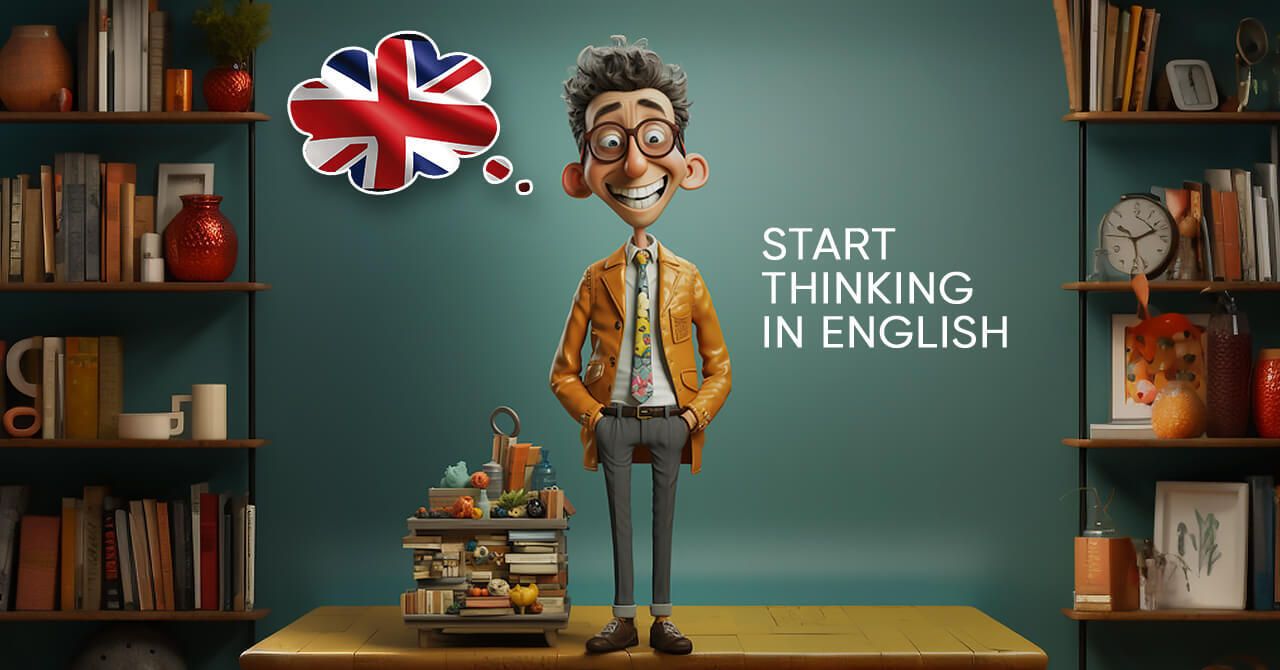
Stop Translating Into English—Start Thinking in English
Thinking in English is a great way to increase your fluency and feel more confident when using English.
One of the most common mistakes I see that my students make is thinking about a sentence in their native language and translating it to English. The problem with this is that it creates not-so-correct sentences.
One of the techniques I have been practicing from almost the beginning of my English learning journey, and even now that I teach, is—thinking in English. Now, without any argument, I think you all agree that we spend most of our time in our heads. At least I do! So, why not use this as a way to improve your English? I know some of you are thinking: “But I’m not at an advanced level. So I can’t do this.” Yes, you can! In fact, this is what you need to get to an advanced level.
So let’s talk about how to do it:
- First, just think of words that describe your situation. For instance, if you’re at a birthday party, think of words like “happy,” “dance,” “cake,” “present,” “dress,” “song,” “decoration,” etc.
- Try and make complete sentences about your situation. For example:
I’m reading a book.
I have a pet.
I slept for 8 hours.
3. Now, challenge yourself a bit. See if you can have a conversation about something. Or talk about a subject for a good 2-3 minutes. And by all means, make it as fun as possible. Tie your practices with something you love, like a hobby. This can help you stay motivated.
Let me tell you about what I used to do. Ok, I’m a huge fan of movies. Like, HUGE. (I am not going to talk about how ESSENTIAL it is to watch movies in your target language!!). So, I sometimes watched talk shows or interviews about my favorite actors and movies. So, to make the learning process more enjoyable, I would imagine that I’m an actress on a talk show, being asked different questions about my lifestyle and habits, and so on. I even made myself a Topic-jar! What’s that? It’s a jar with tens of topics on each piece of paper—food, travelling, work, TV, love, school, favorite car, etc. So, I would put my hand into the jar and grab a random paper; then, I would talk about that subject as much as I could. And don’t get me wrong, this was NOT easy in the beginning. I would have to have a dictionary AND Google open in front of me, so I could find the word or the expression I was looking for. But after a while, I could totally see the progress I was making. I was not using a dictionary as much, and my hesitation to find the right word in my mind was slowly fading.
Another way, if you like watching movies, is to complain! Yes, you read that correctly. You know that feeling when sometimes a story or a scene in a movie doesn’t make sense? Or when you know your favorite character is doing something wrong, and you’re dying to tell them? Well, do it. Nag! Complain! In English.
Oh, come on, you really want me to believe that Jack doesn’t fit on that huge door next to Rose?!
I know, it’s a silly method. But trust me, it works! This way, you will get more comfortable with speaking English in everyday situations. And you’re learning and revising a wide range of vocabulary in the best way possible: in context! To wrap it up, thinking in English is a great way to increase your fluency and feel more confident when using English.
Certified English teacher, here to make your language learning experience, fun.

